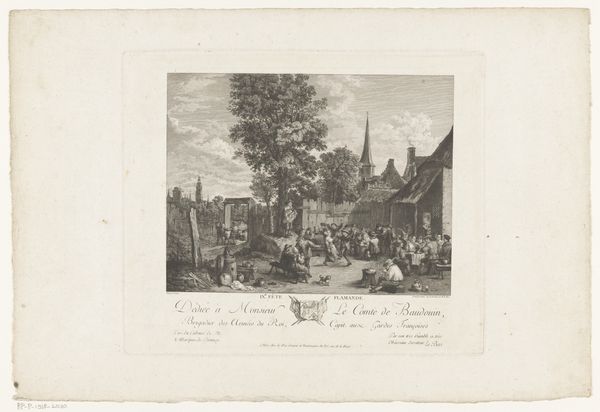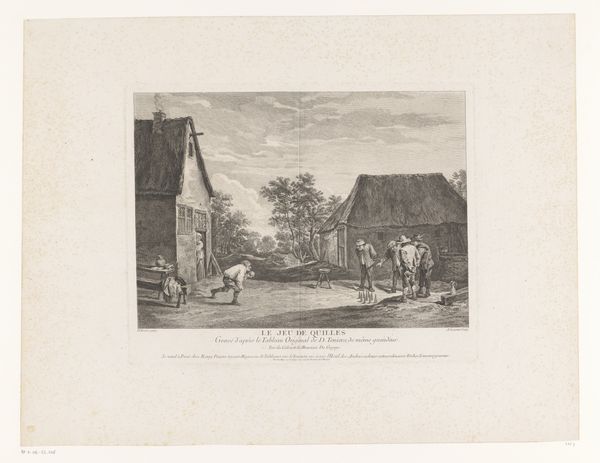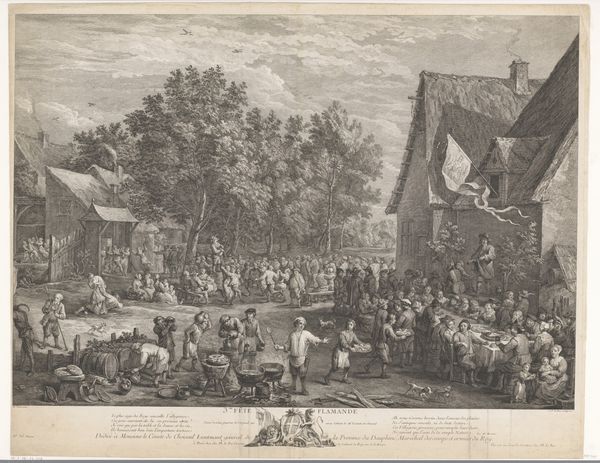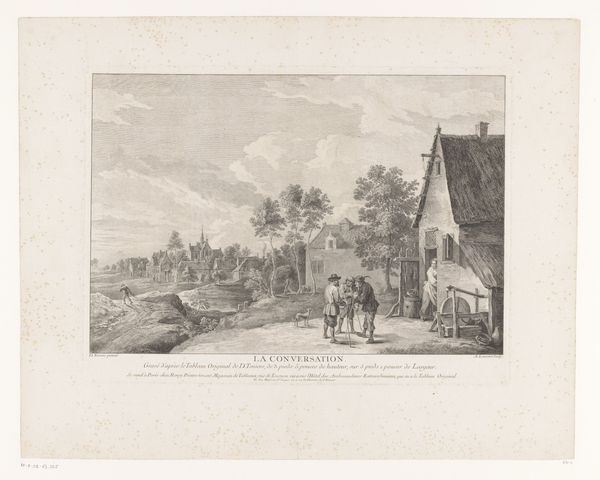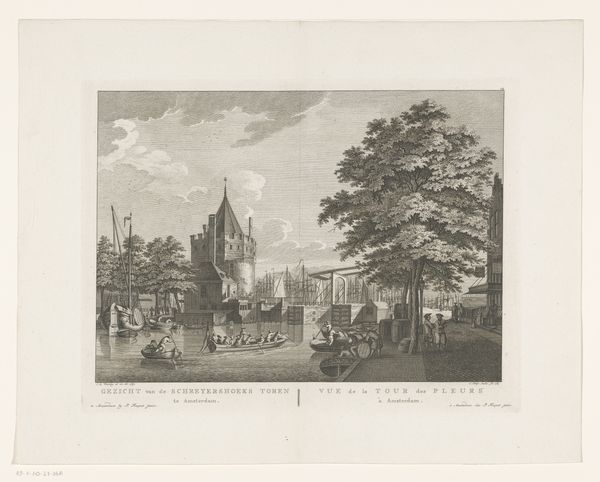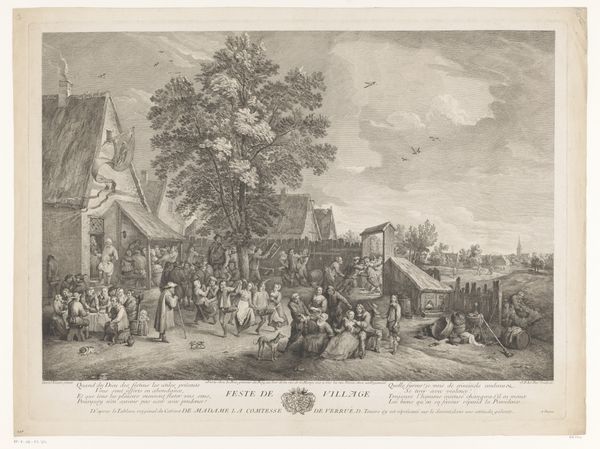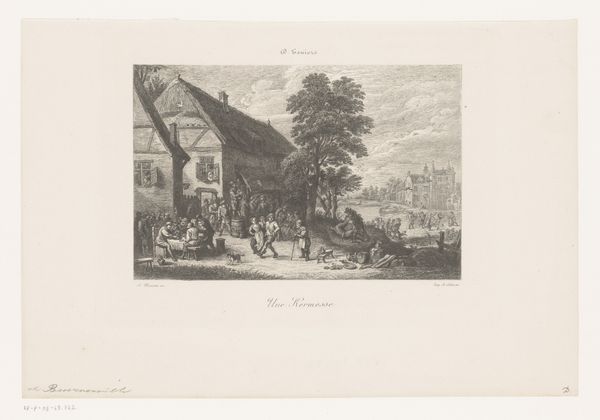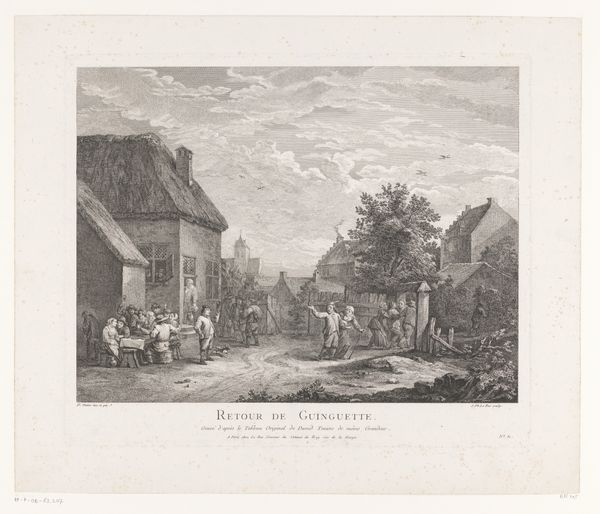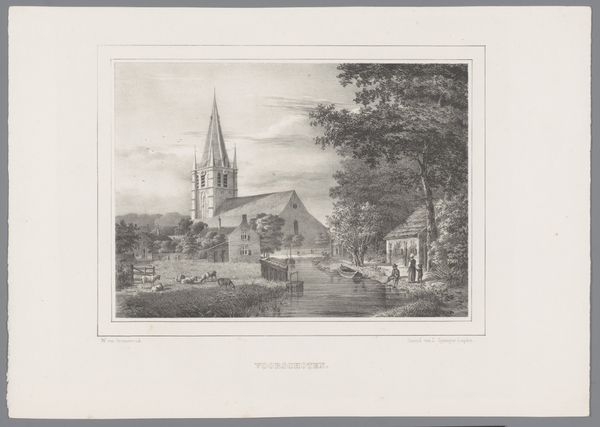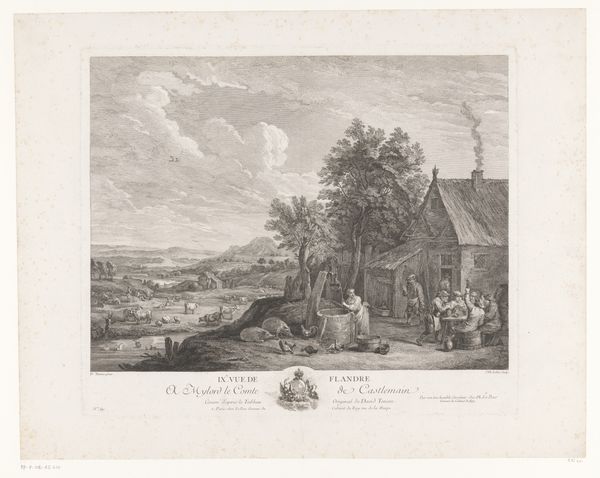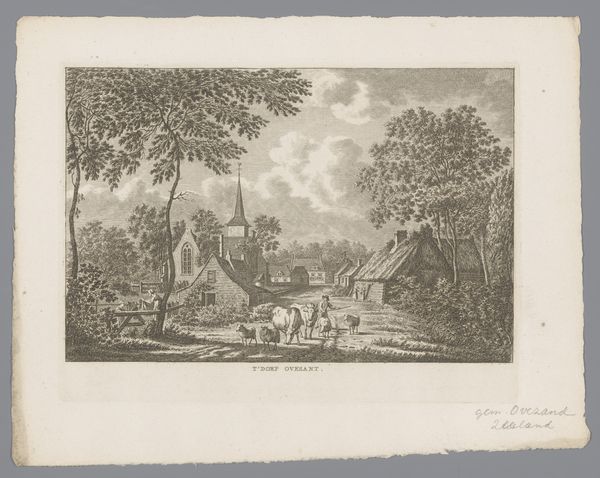
#
pencil drawn
#
photo of handprinted image
#
light pencil work
#
ink paper printed
#
pencil sketch
#
old engraving style
#
white palette
#
ink colored
#
pencil work
#
repetition of white colour
Dimensions: height 226 mm, width 262 mm
Copyright: Rijks Museum: Open Domain
Curator: Let's turn our attention to this detailed print titled "Dorpsfeest," created in 1771 by Pietro Antonio Martini. Its meticulous lines capture a lively village scene. Editor: Ah, it's a celebration frozen in time! It's incredibly detailed, and a bit overwhelming actually – like trying to eavesdrop on a party where everyone’s speaking at once. There’s a bustling energy, but it feels somewhat... staged? Curator: Precisely. The composition reflects a deliberate ordering of space, from the central figures engaged in some sort of communal cooking, to the architectural structures that neatly frame the event. The linear perspective draws our gaze into the heart of the village square, encouraging us to observe each micro-narrative within. Notice how Martini employs a fine hatching technique to articulate form and create tonal variation, lending depth to an otherwise flat plane. Editor: The tiny details are exquisite! The rendering of light and shadow is fantastic, especially considering it's ink on paper. But that overall order feels almost propagandistic—celebrating rural life, maybe? Everyone seems just a bit too gleeful, a bit too perfectly positioned to showcase productivity. It's like a snapshot designed to elicit an emotional response more than reflect a realistic observation. Curator: Yes, a sentimental gloss on the peasant existence of that era. Beyond its documentary function, the work utilizes carefully placed figures to structure our reading of the social hierarchies represented in this rural space. Martini isn't just showing us the fair; he is conducting a study on a community from an elevated standpoint, in line with Enlightenment ideals and an objective interest in its social mechanisms. Editor: And is it wrong to be drawn in? The choreography is undeniably compelling; I keep finding new details to be fascinated by. There’s a donkey laden with...something...some guys drumming, everyone has a role and yet also just part of an ensemble. Curator: Certainly not wrong. The artist has masterfully woven a complex visual narrative that engages with aesthetic preferences and sociocultural expectations of its time. Editor: So, what began as staged celebration maybe now functions as a study, or rather an artful presentation of history? I find that perspective more meaningful. Curator: Agreed, the work challenges and reveals in equal measure. A worthwhile experience to be sure.
Comments
No comments
Be the first to comment and join the conversation on the ultimate creative platform.
